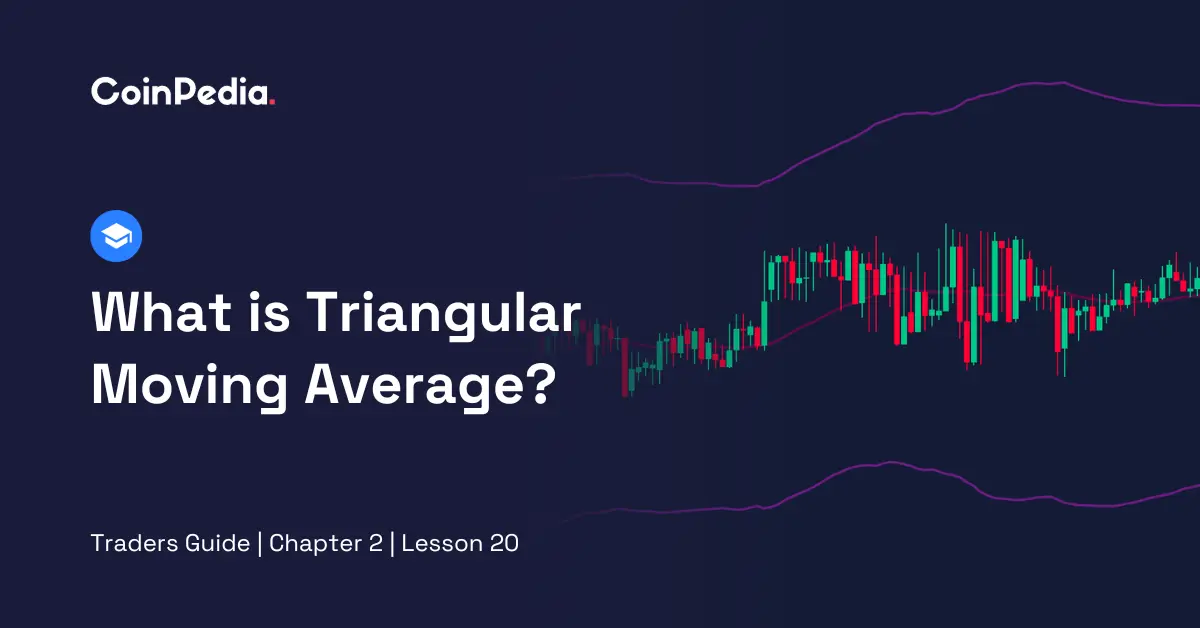
The Moving Averages indicator is highly favoured in crypto trading due to its simplicity in both calculation and interpretation. There are various types of Moving Averages, with the most popular ones being Simple Moving Averages and Exponential Moving Averages. However, sometimes cryptocurrency traders seek a smoother version to reduce false signals. This is where the concept of Triangular Moving Averages comes in. In basic terms, it is an average of an average. Let’s delve deeper into this indicator.
In cryptocurrency trading, the Triangular Moving Averages indicator is a special type of indicator, though it has several similarities to other Moving Averages like SMA and EMA. It calculates the average price of a crypto asset over a set number of data points. But what sets TMA apart is that it is an extra smooth one – it is like taking an average of an average, meaning the date is smoothed out twice for a more reliable view of price trends.
The formula to calculate TRIMA is given below:
| TRIMA = Sum of (SMA values) / N |
Basically, there are two stages in the TRIMA calculation process.
Add up the last N prices (P1, P2, P3, and so on) and divide the sum by N.
| SMA = (P1 + P2 + P3 + ……. + PN) / N |
Add up the SMAs you calculated (SMA 1, SMA2, SMA3, and so on) and divide the sum by N.
| TMA = (SMA1 + SMA2 + SMA3 + …… + SMAN) / N |
Triangular Moving Averages aim to smooth price data, creating a chart line that responds more slowly than a Simple Moving Average. They are beneficial for spotting sustained price trends. They are ideal for reducing sensitivity to frequent price changes.
Also Read: Step into the Crypto Trading World With RVI: A Simple Lesson
TRIMA or TMA are useful for crypto traders seeking less sensitivity to frequent price changes and clearer trend signals, so it is a very powerful tool in the cryptocurrency trading sector. But, TRIMAs too have a few limitations. They can react more slowly in volatile markets, potentially causing delays in trade decisions. If quick response to price changes is essential, other Moving Averages like SMA or EMA may be a better choice. Therefore, understanding the specific requirements of your trading strategy is crucial when using TMAs.
CoinPedia has been delivering accurate and timely cryptocurrency and blockchain updates since 2017. All content is created by our expert panel of analysts and journalists, following strict Editorial Guidelines based on E-E-A-T (Experience, Expertise, Authoritativeness, Trustworthiness). Every article is fact-checked against reputable sources to ensure accuracy, transparency, and reliability. Our review policy guarantees unbiased evaluations when recommending exchanges, platforms, or tools. We strive to provide timely updates about everything crypto & blockchain, right from startups to industry majors.
All opinions and insights shared represent the author's own views on current market conditions. Please do your own research before making investment decisions. Neither the writer nor the publication assumes responsibility for your financial choices.
Sponsored content and affiliate links may appear on our site. Advertisements are marked clearly, and our editorial content remains entirely independent from our ad partners.
Bitcoin is still moving in a tight range, but short-term charts show the recent drop…
Bitcoin, Ethereum and XRP are trading lower today as crypto markets react to strong U.S.…
Crypto research platform Altcoin Buzz has released a side-by-side comparison of two popular altcoins, Bittensor…
A growing number of crypto analysts are drawing an interesting comparison between XRP and the…
Russia’s central bank has announced a major step toward regulating the future of cryptocurrencies. The…
As the crypto market remains in a prolonged bear market, investors are wondering whether altcoins…